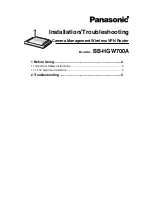
Installation Manual
7. Appendix
D-6
www.qtech.ru
When connecting, you cannot twist or bend the fiber. After installation, the
bent radius of the fiber cannot be smaller than 40 mm (In dynamic bending
case, the minimum bend radius is 20 D; in the static bending case, the
minimum bend radius is 10 D; D is the fiber sheath diameter).
If the fiber needs to pass through the metal board hole when connecting,
the metal board hole should have the smooth and fully rounded surface
(the rounded radius should be no less than 2 mm). When passing through
the metal board hole and turning along the sharp edge of the structural
part, we should add the protective sleeve or pad.
Be careful when plugging the connector and avoid damaging the connector
or fracturing the fiber because of too much force. Avoid pulling, pressing,
and extruding the fiber. The permitted maximum tensile force and crush
force of the fiber are as shown in the following table.
Appendix Table D-6 Permitted force of the fiber
Force Time
Tensile Force (N)
Crush Force (N/100mm)
Short-term force
150
500
Long-term force
80
100
Installation Method of Fiber
After the fiber is drawn out from the optical interface, the fiber directly connected to the
photoelectric converter can be coiled to hang in the inner side of the chassis. The fiber cascaded
with other routers should slip over the PVC pipe to draw out, avoiding traction and stretching.
Fiber itself does not belong to the conductor, and it does not sense or
transduce the over-voltage, but the strengthen core of the fiber optic cable
(the armored component installed to prevent the fiber from being affected
by the environment event) can easily sense and transduce the lightning
overvoltage, so we should treat properly. It is recommended that the user
performs the ground protection at the user end of the fiber optic cable.
D2.3
Equipotential Connection Method





































